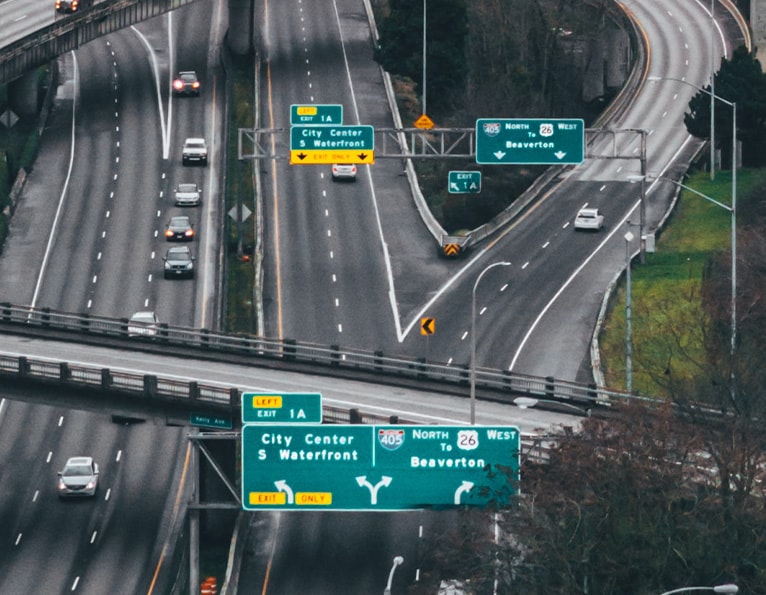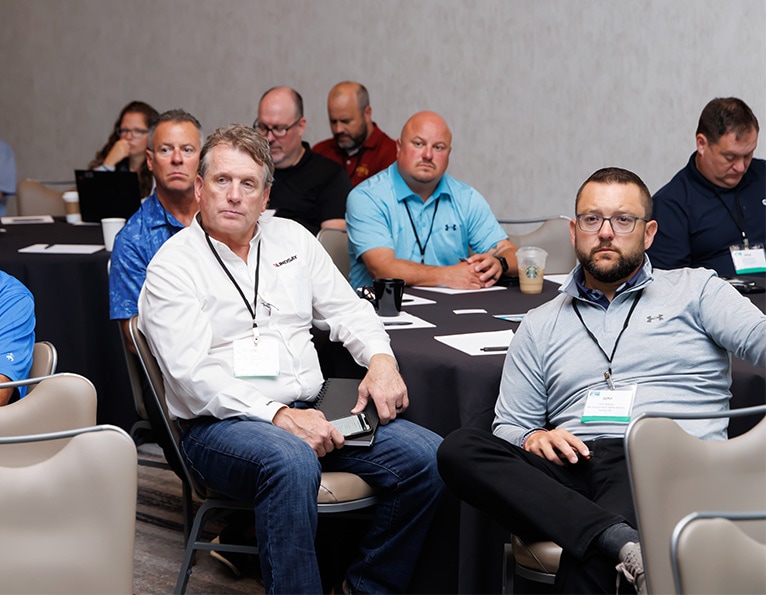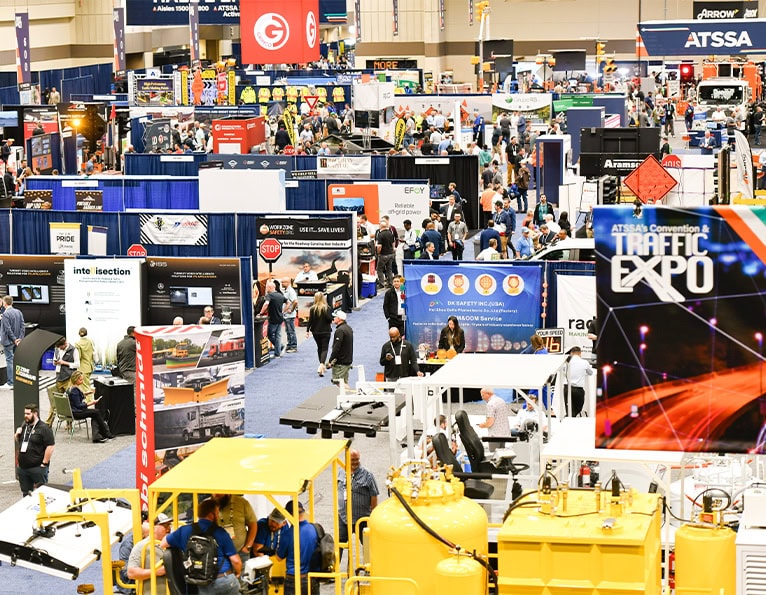Latest updates
NCUTCD summer meeting provides traffic signals, VRU, MUTCD updates
The National Committee on Uniform Traffic Control Devices NCUTCD summer meeting addressed a variety of topics including traffic signals and vulnerable road users and provided an indication that work is progressing on the updated Manual on Uniform Traffic Control Devices MUTCD. In May, ATSSA President & CEO Stacy Tetschner sent a letter to Federal Highway Administration Administrator Shailen P. Bhatt urging the FHWA to publish the updated MUTCD by the May 15 deadline set forth in the U.S. Code. Tetschner acknowledged the "tremendous amount of work” needed to update the MUTCD but said he wanted to “stress how vital it is that this statutory deadline is met.” Toward the end of the summer meeting of the NCUTCD, also referred to as “the National Committee,” federal officials made reference to August, suggesting work on the final rule is moving forward. However, there was no commitment that it would be published that month. By Jim Rhine, ATSSA Innovation & Technical Services Manager The National Committee on Uniform Traffic Control Devices NCUTCD summer meeting addressed a variety of topics including traffic signals and vulnerable road users and provided an indication that work is progressing on the updated Manual on Uniform Traffic Control Devices MUTCD. In May, ATSSA President & CEO Stacy Tetschner sent a letter to Federal Highway Administration Administrator Shailen P. Bhatt urging the FHWA to publish the updated MUTCD by the May 15 deadline set forth in the U.S. Code. Tetschner acknowledged the "tremendous amount of work” needed to update the MUTCD but said he wanted to “stress how vital it is that this statutory deadline is met.” Toward the end of the summer meeting of the NCUTCD, also referred to as “the National Committee,” federal officials made reference to August, suggesting work on the final rule is moving forward. However, there was no commitment that it would be published that month. Another rulemaking effort was also discussed, the Public Right-of-Way Accessibility Guidelines PROWAG rulemaking, which will impact the MUTCD. FHWA staff said that rulemaking is making progress toward a final rule. However, FHWA is not responsible for it. The U.S. Access Board, which is an independent federal agency that promotes accessible design, is tasked with that duty. After the final rule is issued, the U.S. Department of Transportation USDOT and the U.S. Department of Justice must conduct rulemaking procedures to adopt PROWAG into federal regulations. After that step, FHWA will conduct another rulemaking to address revisions needed in the MUTCD to adopt relevant aspects of PROWAG. Timing for those steps was not released by federal officials during the meeting, held in June in Tacoma, Wash. Three discussions regarding traffic signals and pedestrian and vulnerable road user VRU enhancements seemed particularly relevant for ATSSA members. Significant attention was given to simplifying the guidance documentation for improving safety for pedestrians and VRUs. In 2021 the U.S. reported the most pedestrian deaths in a single year in four decades, a 12% increase from the previous year. Street design and physical infrastructure solutions were highlighted as key components for addressing this trend. Also, digital infrastructure solutions notably enhance those efforts as an operating system for the future of mobility on physical assets. A discussion of traffic signal operations and timing considerations focused on suggested edits to the MUTCD for Leading Pedestrian Intervals LPIs. Participants recognized the benefits of LPIs in improving pedestrian safety and proposed updates to provide clearer guidance on their use and implementation. This included recommendations for appropriate durations and signal phasing to prioritize pedestrian movements at signalized intersections. A meeting on Adaptive Signal Control Systems ASCS explored the potential of ASCS to optimize traffic flow and enhance pedestrian and VRU safety. Suggested edits to the MUTCD included guidance on integrating and utilizing ASCS, emphasizing the importance of real-time data, adaptive signal timing and coordination strategies to accommodate changing traffic conditions and prioritize pedestrian and VRU movements.
TRIP releases updated state-by-state safety statistics
TRIP, a national transportation research nonprofit, has released updated statistics for its latest report on traffic fatalities and serious injury crashes nationwide. The new information provides the latest statistics for each state to accompany its June report, “Addressing America’s Traffic Safety Crisis: Examining the Causes of Increasing U.S. Traffic Fatalities and Identifying Solutions to Improve Road User Safety.” The updated information is available in the form of downloadable fact sheets for each state and includes information about each state’s surface transportation system and federal funding. TRIP, a national transportation research nonprofit, has released updated statistics for its latest report on traffic fatalities and serious injury crashes nationwide. The new information provides the latest statistics for each state to accompany its June report, “Addressing America’s Traffic Safety Crisis: Examining the Causes of Increasing U.S. Traffic Fatalities and Identifying Solutions to Improve Road User Safety.” The updated information is available in the form of downloadable fact sheets for each state and includes information about each state’s surface transportation system and federal funding. The report released June 21 showed that the high number of traffic fatalities and serious-injury crashes over the past three years took a significant toll on the nation in both lives lost and economic costs. Utilizing data from a 2023 National Highway Traffic Safety Administration NHTSA report, TRIP estimated that fatal and serious traffic crashes in the U.S. in 2022 caused a total of $1.9 trillion in “societal harm,” including $465 billion in economic costs and $1.4 trillion in quality-of-life costs.
‘Culture of safety’ panel featured at Midyear Meeting
ATSSA’s Midyear Meeting features a panel on “Creating a Culture of Safety in the Workplace.” Panelists include Doug Dolinar of Guidemark Inc., Kathi Holst of D2K Traffic Safety Inc., Chris Brookes of the Michigan Department of Transportation MDOT and Cameron Greene of ATSSA. Dave Krahulec of Horizon Signal Technologies will moderate. The Midyear Meeting will be held Aug. 15-18 at the Loews Chicago O’Hare Hotel in Rosemont, Ill. Registration is now available. The hotel block closes July 24. ATSSA’s Midyear Meeting features a panel on “Creating a Culture of Safety in the Workplace.” Panelists include Doug Dolinar of Guidemark Inc., Kathi Holst of D2K Traffic Safety Inc., Chris Brookes of the Michigan Department of Transportation MDOT and Cameron Greene of ATSSA. Dave Krahulec of Horizon Signal Technologies will moderate. The Midyear Meeting will be held Aug. 15-18 at the Loews Chicago O’Hare Hotel in Rosemont, Ill. Registration is now available. The hotel block closes July 24. The culture of safety panel is part of the Aug. 16 general session. It will emphasize the need to be proactive to prevent worker fatalities and injuries. It also will address how the roadway safety infrastructure industry can work with government agencies to reduce worker injuries and include a discussion of success stories resulting from employing new safety strategies. The issue of safety contingency funding. The ATSS Foundation and host Illinois ATSSA Chapter will hold a Foundation fundraiser on Aug. 16 at 6:30 p.m. The evening includes a Chicago Dogs baseball game at the 6,300-seat Impact Field, located in the heart of the Rosemont entertainment district. Tickets can be purchased as part of Midyear registration. Tickets are $75 through Aug. 4 and then increase to $90. Tickets cover admission, food and beverages. Consult the full schedule of committee and council meetings for additional information on the Midyear Meeting.
Upcoming Events
Midyear Meeting 2025
Join us Aug. 19-22, 2025, in Milwaukee, Wis., for the Midyear Meeting. ATSSA members hold committee & council meetings, discuss industry issues & advance roadway safety.
2026 Convention & Traffic Expo
Where Roadway Safety + Innovation Intersect. ATSSA’s 56th Annual Convention & Traffic Expo is Feb. 20-24, 2026, in Houston, Texas. Join key roadway safety and transportation professionals at this premier event.
Visit ATSSA at booth #EH2316 during Utility Expo 2025 in Louisville.
TOOLS & RESOURCES
Easily find content, tools or products in the Resource Library. Search industry, legal and volunteer resources; products, toolkits and publications for industry professionals, past webinars and more. Get the ATSSA Worker Protection Toolkit for resources on incident response and prevention.
ATSSA Community
As a member of ATSSA, you become part of a vibrant community made up of thousands of roadway safety infrastructure professionals. Explore ways of connecting with your professional community through chapters and volunteer leadership and access quick links to the most popular member resources.
Innovation and Technical Services
ATSSA is dedicated to being a reliable and accurate source of innovative technology information for all members. As the industry moves towards an automated and more technologically advanced future, prepare and learn from best practices and resources related to traffic safety topics and technical services.
North America’s top roadway safety event
Join thousands of roadway safety and transportation professionals at ATSSA’s 56th Annual Convention & Traffic Expo, Feb. 20-24, 2026, in Houston, Texas. Connect with industry leaders, explore the latest safety solutions and drive innovation.
ATSSA's core purpose is to advance roadway safety. ATSSA members embrace the goal of eliminating roadway fatalities through the design, manufacture and installation of road safety and traffic control devices. For more than 50 years, ATSSA’s training has been recognized as the highest quality roadway safety training program available. Get top training for your team.





